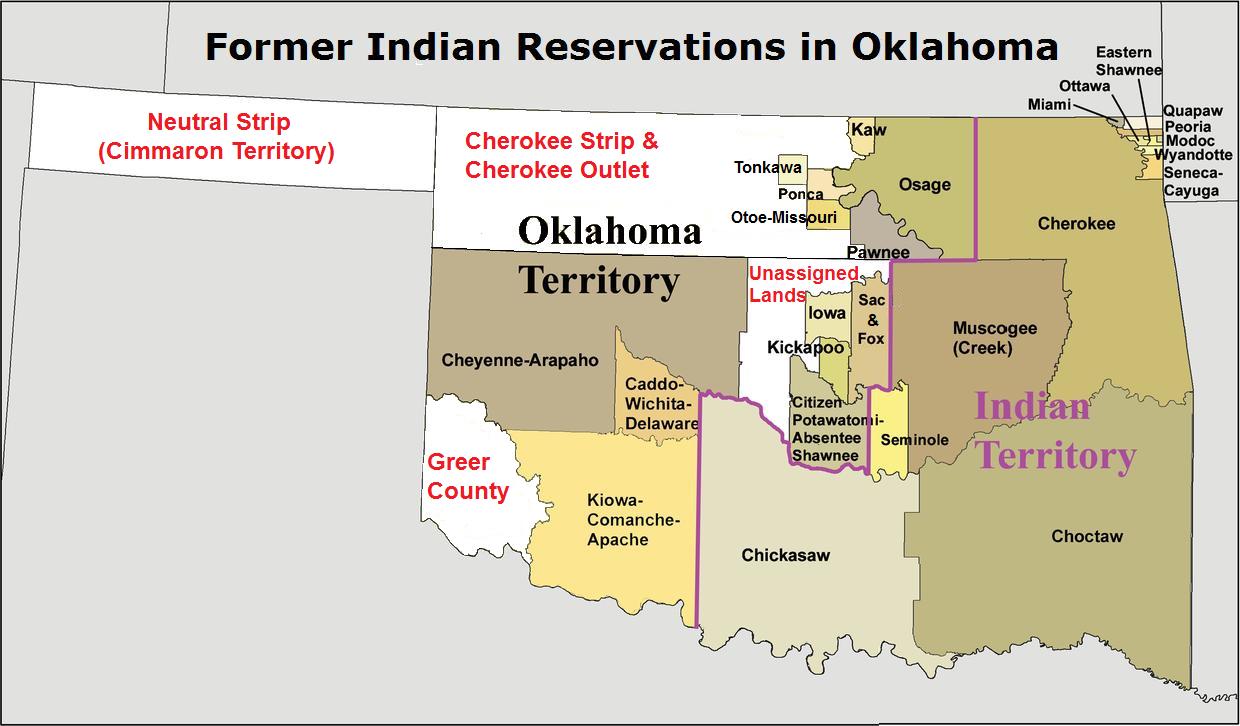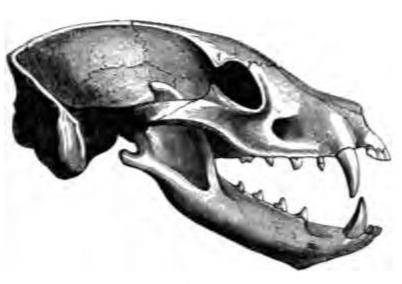|
Deltatheridiidae
Deltatheridiidae is an extinct family (biology), family of basal carnivore, carnivorous Metatheria, metatherians that lived during the Cretaceous and Paleogene. They were closely related to marsupialia, marsupials. Their fossils are restricted to Central Asia (Mongolia and Uzbekistan) and North America (United States - Oklahoma, Texas, Utah, Wyoming). They mostly disappeared in the KT event, but a ghost lineage, currently represented by ''Gurbanodelta'', survived until the late Paleocene by decreasing in size and becoming Insectivore, insectivorous. The family consist in six genus, genera:Xijun Ni; Qiang Li; Thomas A. Stidham; Lüzhou Li; Xiaoyu Lu; Jin Meng (2016). "A late Paleocene probable metatherian (?deltatheroidan) survivor of the Cretaceous mass extinction". Scientific Reports. 6: Article number 38547. . *''Atokatheridium'' *''Deltatheridium'' *''Deltatheroides'' *''Gurbanodelta'' *''Lotheridium'' *''Oklatheridium'' *''Nanocuris'' *''Sulestes'' *''Tsagandelta'' R ... [...More Info...] [...Related Items...] OR: [Wikipedia] [Google] [Baidu] |
Sulestes
''Sulestes'' is an extinct genus of Deltatheridiidae from Cretaceous period. It has only been recovered from the Bissekty Formation, Bissekty and Aitym Formation, Aitym Formations in Uzbekistan.A. O. Averianov, J. D. Archibald, and E. G. Ekdale. 2010. New material of the Late Cretaceous deltatheroidan mammal ''Sulestes'' from Uzbekistan and phylogenetic reassessment of the metatherian-eutherian dichotomy. Journal of Systematic Palaeontology 8 (3): 301-330. Digital object identifier, doi]10.1080/14772011003603499/ref> Description ''Sulestes'' is known from several jaw bones and teeth. Its holotype CCMGE 35/12000 consists of a left maxilla fragment with the first two molars. Significantly more material was referred to the genus in 2010 that included a right maxilla and several right and left dentary fragments. The genus and the ''Deltatheridiidae'' family as a whole are thought to be predators. Classification The following cladogram is modified from Averianov ''et al.'', 2010: ... [...More Info...] [...Related Items...] OR: [Wikipedia] [Google] [Baidu] |
Nanocuris
''Nanocuris'' is an extinct genus of Deltatheridiidae from the Cretaceous of Canada (Saskatchewan) and United States (Wyoming - Lance Formation and Hell Creek Formation).R. C. Fox, C. S. Scott, and H. N. Bryant. 2007. A new, unusual therian mammal from the Upper Cretaceous of Saskatchewan, Canada. Cretaceous Research 28(5):821-829. Initially, it was classified in a proper family, Nanocuridae, in the clade Eutheria, but a reanalysis of a new specimen revealed a delthatheroid affinity of the genus. Size It was the largest deltatheroidean. Alongside with the similarly sized ''Altacreodus'', it likely replaced earlier Cretaceous eutriconodont Eutriconodonta is an order (biology), order of early mammals. Eutriconodonts existed in Asia (including Insular India, pre-contact India), Africa, Europe, North America, North and South America during the Jurassic and the Cretaceous periods. The ...s as a large sized predatory mammal. Classification Its closest relative is the smallest delt ... [...More Info...] [...Related Items...] OR: [Wikipedia] [Google] [Baidu] |
Lotheridium
''Lotheridium'' is an extinct genus of deltatheroidan mammals that lived in what is now Asia during the Late Cretaceous, about 72–66 million years ago. The genus contains a monotypic taxon, single species, ''Lotheridium mengi'', named in 2015 after paleontologist Jin Meng. It is known from a single fossil specimen—a skull with associated lower jaws—found in the Qiupa Formation of Henan Province, China and housed in the collections of the Zhejiang Museum of Natural History. The skull measures in length, suggesting ''Lotheridium'' was large compared to most other deltatheroidans. Though the preserved skull is almost complete, it has been flattened and the skull roof was crushed during fossilization. ''Lotheridium'' is believed to be a carnivore. It had a short snout and 46 teeth, among which the upper Canine tooth, canines are the largest and most elongated. Though its lower canines are far smaller than the upper pair, they are still large enough that there are small gaps in ... [...More Info...] [...Related Items...] OR: [Wikipedia] [Google] [Baidu] |
Deltatheroides
''Deltatheroides'' is an extinct genus of Deltatheridiidae from Cretaceous of Mongolia Mongolia is a landlocked country in East Asia, bordered by Russia to the north and China to the south and southeast. It covers an area of , with a population of 3.5 million, making it the world's List of countries and dependencies by po .... Another specimen found in Wyoming is suspected to belong to this genus. References Prehistoric metatherians Cretaceous mammals Fossils of Mongolia Fossil taxa described in 1926 Prehistoric mammal genera {{cretaceous-mammal-stub ... [...More Info...] [...Related Items...] OR: [Wikipedia] [Google] [Baidu] |
Atokatheridium
''Atokatheridium'' is an extinct genus of Deltatheridiidae from Cretaceous of United States The United States of America (USA), also known as the United States (U.S.) or America, is a country primarily located in North America. It is a federal republic of 50 U.S. state, states and a federal capital district, Washington, D.C. The 48 ....Z. Kielan-Jaworowska and R. L. Cifelli. 2001. Primitive boreosphenidan mammal (?Deltatheroida) from the Early Cretaceous of Oklahoma. Acta Palaeontologica Polonica 46(3):377-391. References Prehistoric metatherians Cretaceous mammals of North America Fossils of the United States Fossil taxa described in 2001 Monotypic prehistoric mammal genera {{cretaceous-mammal-stub ... [...More Info...] [...Related Items...] OR: [Wikipedia] [Google] [Baidu] |
Metatheria
Metatheria is a mammalian clade that includes all mammals more closely related to marsupials than to placentals. First proposed by Thomas Henry Huxley in 1880, it is a more inclusive group than the marsupials; it contains all marsupials as well as many extinct non-marsupial relatives. It is one of two groups placed in the clade Theria alongside Eutheria, which contains the placentals. Remains of metatherians have been found on all of Earth’s continents. Description Distinctive characteristics ( synapomorphies) of Metatheria include a prehensile tail, the development of a capitular tail on the humerus, the loss of tooth replacement on the second and fifth premolars, lower canines that outwardly diverge from each other, an angular process on the dentary bone—which additionally bears a posterior shelf in its masseteric fossa in Metatheria—that is equal to or greater than the length of the ramus, and the lower fifth premolar with a "very trenchant" cristid obliqua/ecto ... [...More Info...] [...Related Items...] OR: [Wikipedia] [Google] [Baidu] |
Gurbanodelta
''Gurbanodelta kara'' is an extinct genus of metatherian mammal. A deltatheroid, it represents the geologically youngest member of this clade, dating to the late Paleocene of China. Description ''Gurbanodelta kata'' is known from upper molars. They are the smallest sized among deltatheroideans, suggesting that it was a small, shrew-sized mammal. Classification ''Gurbanodelta kara'' nests deeply within Deltatheridiidae. Its closest relative is the largest known deltatheroidean, ''Nanocuris ''Nanocuris'' is an extinct genus of Deltatheridiidae from the Cretaceous of Canada (Saskatchewan) and United States (Wyoming - Lance Formation and Hell Creek Formation).R. C. Fox, C. S. Scott, and H. N. Bryant. 2007. A new, unusual therian mamm ...''. Size reduction Deltatheroideans are relatively large carnivorous mammals. By contrast, ''Gurbanodelta kara'' is a small sized species. This indicates a size reduction that potentially allowed it to survive the KT event, likely switching to ... [...More Info...] [...Related Items...] OR: [Wikipedia] [Google] [Baidu] |
Oklahoma
Oklahoma ( ; Choctaw language, Choctaw: , ) is a landlocked U.S. state, state in the South Central United States, South Central region of the United States. It borders Texas to the south and west, Kansas to the north, Missouri to the northeast, Arkansas to the east, New Mexico to the west, and Colorado to the northwest. Partially in the western extreme of the Upland South, it is the List of U.S. states and territories by area, 20th-most extensive and the List of U.S. states and territories by population, 28th-most populous of the 50 United States. Its residents are known as Oklahomans and its capital and largest city is Oklahoma City. The state's name is derived from the Choctaw language, Choctaw words , 'people' and , which translates as 'red'. Oklahoma is also known informally by its List of U.S. state and territory nicknames, nickname, "The Sooner State", in reference to the Sooners, American pioneer, American settlers who staked their claims in formerly American Indian-o ... [...More Info...] [...Related Items...] OR: [Wikipedia] [Google] [Baidu] |
Oklatheridium
''Oklatheridium'' is an extinct genus of deltatheroidan from the United States The United States of America (USA), also known as the United States (U.S.) or America, is a country primarily located in North America. It is a federal republic of 50 U.S. state, states and a federal capital district, Washington, D.C. The 48 ....B. M. Davis, R. L. Cifelli, and Z. Kielan-Jaworowska. 2008. 1. Earliest Evidence of Deltatheroida (Mammalia: Metatheria) from the Early Cretaceous of North America. Mammalian Evolutionary Morphology: A Tribute to Frederick S. Szalay 3-24 References Prehistoric metatherians Cretaceous mammals of North America Fossil taxa described in 2008 Prehistoric mammal genera {{cretaceous-mammal-stub ... [...More Info...] [...Related Items...] OR: [Wikipedia] [Google] [Baidu] |
Genus
Genus (; : genera ) is a taxonomic rank above species and below family (taxonomy), family as used in the biological classification of extant taxon, living and fossil organisms as well as Virus classification#ICTV classification, viruses. In binomial nomenclature, the genus name forms the first part of the binomial species name for each species within the genus. :E.g. ''Panthera leo'' (lion) and ''Panthera onca'' (jaguar) are two species within the genus ''Panthera''. ''Panthera'' is a genus within the family Felidae. The composition of a genus is determined by taxonomy (biology), taxonomists. The standards for genus classification are not strictly codified, so different authorities often produce different classifications for genera. There are some general practices used, however, including the idea that a newly defined genus should fulfill these three criteria to be descriptively useful: # monophyly – all descendants of an ancestral taxon are grouped together (i.e. Phylogeneti ... [...More Info...] [...Related Items...] OR: [Wikipedia] [Google] [Baidu] |
Insectivore
file:Common brown robberfly with prey.jpg, A Asilidae, robber fly eating a hoverfly An insectivore is a carnivore, carnivorous animal or plant which eats insects. An alternative term is entomophage, which can also refer to the Entomophagy in humans, human practice of eating insects. The first vertebrate insectivores were amphibians. When they evolved 400 million years ago, the first amphibians were piscivores, with numerous sharp conical teeth, much like a modern crocodile. The same tooth arrangement is however also suited for eating animals with exoskeletons, thus the ability to eat insects can stem from piscivory. At one time, insectivorous mammals were scientific classification, scientifically classified in an order (biology), order called Insectivora. This order is now abandoned, as not all insectivorous mammals are closely related. Most of the Insectivora taxa have been reclassified; those that have not yet been reclassified and found to be truly related to each ... [...More Info...] [...Related Items...] OR: [Wikipedia] [Google] [Baidu] |
Ghost Lineage
A ghost lineage is a hypothesized ancestor in a species lineage that has left no fossil evidence, but can still be inferred to exist or have existed because of gaps in the fossil record or genomic evidence. The process of determining a ghost lineage relies on fossilized evidence before and after the hypothetical existence of the lineage and extrapolating relationships between organisms based on phylogenetic analysis. Ghost lineages assume unseen diversity in the fossil record and serve as predictions for what the fossil record could eventually yield; these hypotheses can be tested by unearthing new fossils or running phylogenetic analyses. Ghost lineages and Lazarus taxa are related concepts, as both stem from gaps in the fossil record. A ghost lineage is any gap in a taxon's fossil record, with or without reappearance, while a Lazarus taxon is a type of ghost lineage wherein a species is believed to have gone extinct due to an absence of it in the fossil record, but then reappea ... [...More Info...] [...Related Items...] OR: [Wikipedia] [Google] [Baidu] |




